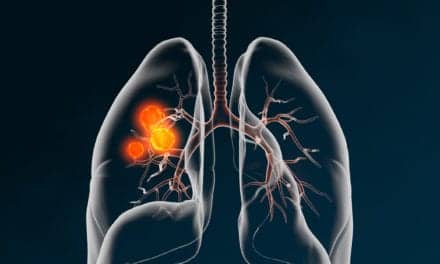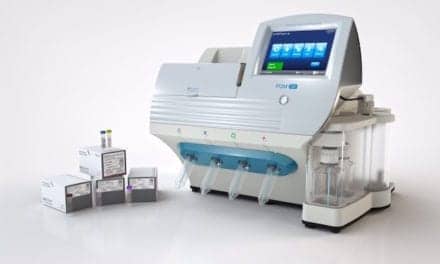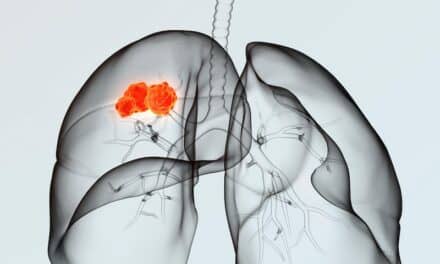On World Lung Day, Reveal Dx board member Mat Brevard discusses why current diagnostic tools fall short—and how new approaches could improve accuracy and outcomes.
Interview by Alyx Arnett
Molecular testing for lung cancer remains limited in its ability to deliver reliable results before biopsy, and many current risk assessment tools still rely heavily on nodule size and growth. For clinical laboratories, that means diagnostic strategies are often constrained, and opportunities to detect disease earlier are missed.
Marking World Lung Day today, Mat Brevard, board member at Reveal Dx, a provider of lung cancer decision support software, discusses how emerging tools and combined testing approaches could help labs play a bigger role in improving detection and outcomes.
CLP: What are the biggest challenges labs face today in diagnosing lung cancer?
Brevard: One big challenge is the lack of convergence on what type of molecular lab test will produce reliable results across a broad clinical population in a screening environment (ie, before biopsy). Circulating tumor DNA, hundreds of gene factors, tumor fragments, and immune response molecules all number in the hundreds to thousands of molecules, producing a massive number of possible combinations for a biomarker for any one of the hundreds of types of cancer that might present in a patient. These factors exist in many tissues and fluids from the patient as well. It’s a very complex situation to try to resolve a reliable test.
All of these molecular tests become much less significant when applied to the general population of older patients who generally have a complex background of comorbidities that greatly confound the ability to detect small molecular signatures.
Determining what test to run is very difficult, and none have emerged that work without direct biopsy of tissue. This also makes ordering the test very difficult. Most tests have very narrow reimbursement criteria that make it confusing, difficult, and time-consuming for doctors to order the tests. On the contrary, every established medical system has access to, and can easily order, a chest CT scan for a wide range of reasons, and the cost of a CT scan is much lower than the molecular tests.
CLP: How is artificial intelligence starting to be used in lung cancer detection, and what might it mean for lab workflows?
Brevard: Trained algorithms can detect lung nodules in CT scans, usually the first sign that a patient might have cancer, and have been available since 2006, long before such software was called AI. These algorithms automatically detect lung nodules and most perform automatic measurements as well. The new and exciting AI revolution has come in the last decade from “radiomic” algorithms that analyze the incredible amount of data that exists in a CT scan of a nodule.
The first such algorithm to be published on is commercialized by RevealDx. Several other similar algorithms have also emerged, one from Optellum, another commercial company, and another, Sybil, produced by Harvard Medical School. These tools add new information about the patient’s risk for cancer, which can accelerate diagnosis.
CLP: What does the data show about the accuracy of newer diagnostic approaches compared with current methods in use?
Brevard: To be blunt, current methods of categorizing risk in patients have fallen way short and left us with lung cancer being more lethal than the next three major cancers combined. This is made ever more frustrating by the fact that we find many millions of lung nodules in people every year in X-rays and CT scans.
But our risk calculators based on medical history do not give enough predictive power, and still the major method of risk scoring is size and growth. So we usually elevate our risk assessment only when we wait and see that a nodule grows. That’s pretty inaccurate and counterproductive to reducing cancer deaths.
Molecular tests in blood or airway fluids have fallen short of prediction too. The most promising new metrics emerging are radiomic risk scoring algorithms, which can analyze features in the data that are not visible to the human eye. In the future, these may be combined with molecular tests to create even more powerful predictors of cancer.
CLP: More women are being diagnosed with lung cancer than before. What factors are driving this trend, and how could labs adjust their testing strategies?
Brevard: This is a big problem. For instance, in China, women are just 3% of the smoking population, yet they account for 27% of lung cancer deaths. This has a large degree to do with some genetic factors, so the availability of precision medicine-based molecular test panels might reap huge rewards here. Increasing low-dose CT scanning is certainly a very useful start and has already proven fruitful in all at-risk populations.
CLP: Beyond testing patients already considered high-risk, how can labs support earlier detection and prevention?
Brevard: Testing labs are very focused on a one-test solution, and most companies are very focused on the particular IP that they utilize. With a complex disease like cancer, medicine will need to rely on a “panel” of data points until there is a definitive diagnosis via biopsy. The obvious starting point is utilizing the incredible availability of relatively low-cost CT scans to find the initial high-risk pool of patients to then step further into more expensive molecular testing.
With about 20 million chest CTs a year in the US, which only cost around $150 each, there is a massive amount of data that a radiomic AI algorithm can use to identify a higher-risk subpopulation of patients currently hidden without the right tools to help identify them. We are left with no alternative but to wait.
CLP: What barriers could slow adoption of new technologies in lung cancer diagnostics?
Brevard: The high costs of genomic or proteomic tests are a major barrier. Small early-stage tumors are almost impossible to detect molecularly unless testing the direct tissue from a biopsy, which is hard to acquire from a lung. So only the most sensitive techniques can work, which require the best and most expensive equipment and reagents to process samples along with well-trained personnel to run the test. Even then, these tests usually can’t achieve any significance until the nodule is large enough to be in an elevated risk category anyway. Recently regulatory barriers have been greatly reduced, so that is certainly a minimal barrier.
The costs of these tests are so high, many thousands of dollars, that they cannot be implemented more widely. This problem is confounded by the relatively poor prognostic power to find lung cancer cases from a general population. The best use of these molecular lab tests will be to secondarily screen a high-risk subpopulation of patients who are identified via a radiomic risk score from a CT scan.
CLP: Where do you see molecular testing having the greatest impact in lung cancer diagnostics going forward?
Brevard: Molecular lab tests have not been able to adequately resolve risk from the general population. They work (and are thus only reimbursed) only when applied to a higher-risk population, such as those with a smoking history. Unfortunately, about 25% of cancers are from never smokers, and this is the fastest-growing group for new lung cancers.
So the best impact from molecular tests will be when radiomic tests are more widely available to run on the already abundant amount of chest CT data present in our medical system. This will, in turn, enlarge the higher-risk patient numbers and allow the molecular tests to corroborate the image data to identify more lung cancer patients at an earlier stage.
ID 86310778 © Nataliia Mysik | Dreamstime.com




